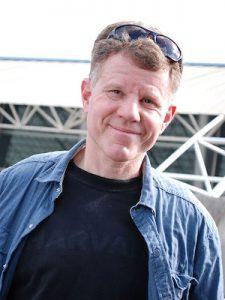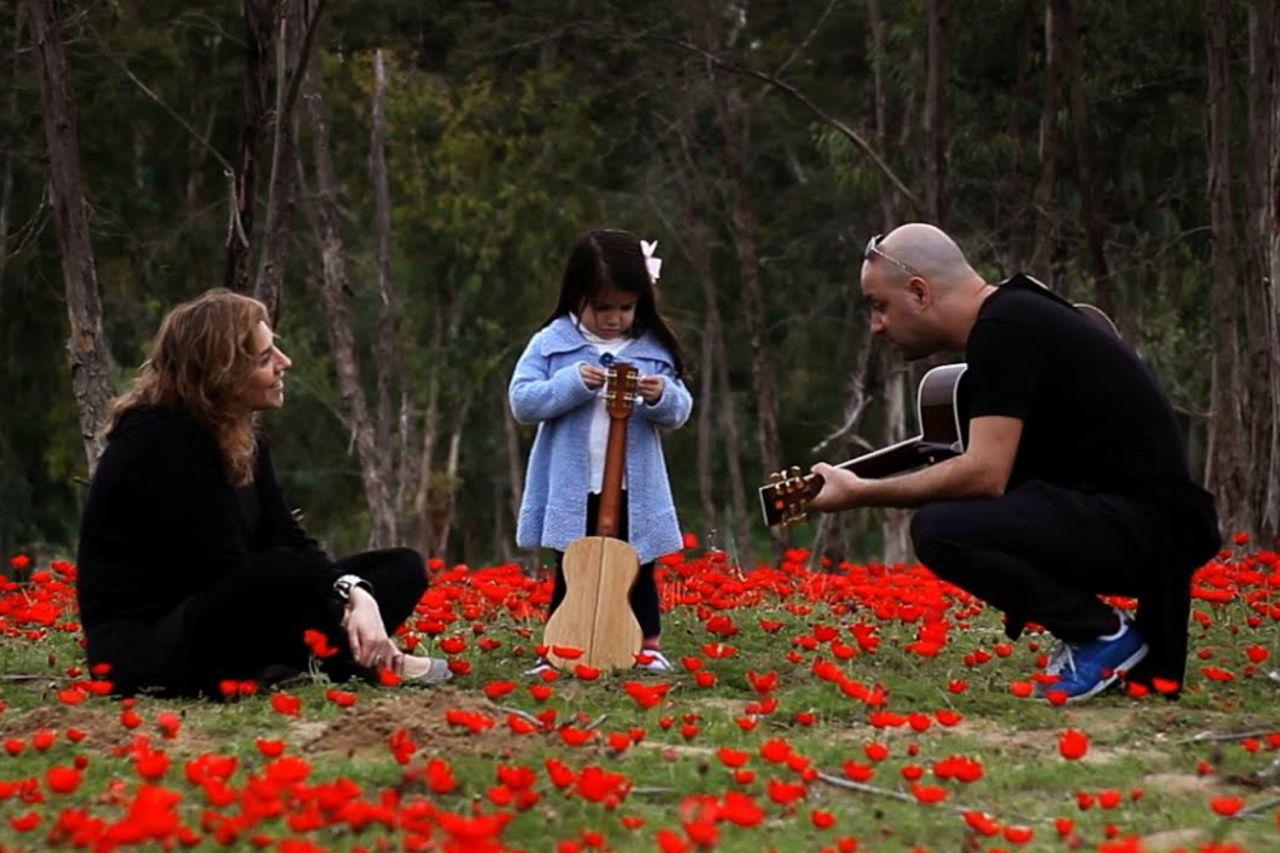 Laura Bialis is drawn to the jagged but fertile fault lines that form when countries and cultures clash. In films about Soviet Jewry, post-war Kosovo, and the Holocaust, she showcases that rare brand of human resilience that not only survives but thrives in adversity. Her most recent film, “Rock in a Red Zone,” profiles the vibrant rock music scene in the Israeli town of Sderot, a scene that flourishes despite a constant barrage of rockets fired from nearby Gaza. She recently spoke with BJFF’s Ken Shulman.
Laura Bialis is drawn to the jagged but fertile fault lines that form when countries and cultures clash. In films about Soviet Jewry, post-war Kosovo, and the Holocaust, she showcases that rare brand of human resilience that not only survives but thrives in adversity. Her most recent film, “Rock in a Red Zone,” profiles the vibrant rock music scene in the Israeli town of Sderot, a scene that flourishes despite a constant barrage of rockets fired from nearby Gaza. She recently spoke with BJFF’s Ken Shulman.
Ken Shulman: I wouldn’t wish for anyone to live under the constant threat of bombardment. But did those adverse conditions somehow help drive the Sderot rock scene?
Laura Bialis:I think adverse conditions can in some cases help certain artists. But Sderot was already famous for its music in the late 1980’s, long before the Qassam rockets started being launched from Gaza. Sderot was a hard place to live since it was founded in the 1950s.
KS: Because of its proximity to Gaza?
LB: Not really. Sderot was created as a transit camp for Jews arriving from the Middle East and Northern Africa. These Eastern Jews, the Mizrahi, left Morocco and Libya and Egypt thinking they were going to Jerusalem. Instead they arrive in Haifa harbor, are put on trucks, and dropped off pretty much in the middle of nowhere. Overnight they’re refugees, living in tents or tin huts.
KS: At that time Israel is barely a decade old. How did it integrate these new immigrants?
LB: Not well, but it’s hard to place a lot of blame here. Israel simply didn’t have the wherewithal to deal with the hundreds of thousands of immigrants who were arriving. Sderot was one of many refugee absorption camps—the ma’aborot—created at the time.
KS: Did the Mizrahi in Sderot consider themselves Israeli?
LB: The Mizrahi community in Israel was marginalized from the beginning. Then when Sderot and other ma’aborot became development towns in the 1960s and 1970s, there weren’t a lot of jobs available to the people living there. And there was huge social pressure to become Israeli—to forget their old language, their old culture, and their roots.
KS: Did they also forget their music?
LB: Israeli music at the time was very western, with a few Russian influences as well. Anything that sounded African or Middle Eastern was frowned upon. The first generation of immigrants probably kept their music to themselves. But their kids didn’t. That next generation, who became the artists of Sderot, embraced the sounds their parents brought with them. And they fused them with contemporary rock. That’s the genius of Sderot music. It is a melting pot of sound, with a strong sprinkling of defiant pride.
KS: Does Sderot mark the real birth of Israeli rock?
LB: I don’t think we can give Sderot sole credit for that. But the bands there were instrumental in turning the tide, in deciding what Israeli music was and would be. One critic in the film says it best when he says that the Sderot bands changed Israeli music into world music.
KS: And then the rockets started to fall. But the music kept playing.
LB: The first wave of bands made music out of a sense of cultural isolation. The next wave started to make music because they were getting bombed. And while that music may not have taken off and changed Israeli culture, it was a vital outlet to the people living there. I saw kids who, despite what they’d seen and lived, seemed to come out whole because they had to rehearse for a concert or record an album. Music gave them a focus.
KS: Sderot doesn’t get a lot of attention, either inside or outside Israel.
LB: It’s a small town, less than a kilometer from the border with Gaza. It doesn’t attract many visitors and isn’t vital to Israeli commerce. A lot of people there feel the government would do more if the rockets were falling on Jerusalem or Tel Aviv. Still, there have been amazing examples of solidarity from Israelis, thousands of people driving down to Sderot to buy things at the stores. Teenagers who walk the streets on Shabbat and sing during some of the worst weekends there.
KS: And the international media?
LB: The first time I heard about Sderot, I assumed it was a settlement. Then I found out it was in Israel proper, and that it had been under bombardment for years. The week I first read about the situation two people were killed. And yet when the New York Times got around to reporting it, they led with the news that the IDF had killed five people in Gaza. And they mentioned that “militants” were launching rockets into Sderot. They didn’t mention that Sderot was a town, and that these “militants” were targeting civilians. From December 2007 – December 2008, my first year there, one thousand rockets fell.
KS: Is this evidence of an anti-Israel bias?
LB: I can’t answer that in good faith. I do think it’s partially about the numbers of casualties. People tend not to turn the channel when you show them a bloodbath. Trauma doesn’t necessarily make for good headlines. It’s also hard for a journalist who comes to Sderot for an afternoon to grasp the situation. You’ll probably never see a rocket, and if you do it feels like the chances of getting hit are so remote. I felt that way too. But then you live there, and you hear of people whose kitchens were hit twice, or who have shrapnel in their brains, or a family whose children were killed. You understand that the threat is real. But you also understand how exceptional Sderot is, and how resilient and creative the people are there. There is definitely a magic to this place.
 Ken Shulman has covered soccer World Cups, alpine ski races, sumo wrestling, bloodless bullfighting, and wild boar hunting for NPR’s “Only A Game,” Newsweek, The New York Times, The International Herald Tribune, and the BBC. He is a two time RTNDA “Edward R Murrow” broadcast award winner and was selected as Champion of Justice by the National Association of Criminal Defense Attorneys. He is also a reading and writing tutor at Cambridge Ringe and Latin High School.
Ken Shulman has covered soccer World Cups, alpine ski races, sumo wrestling, bloodless bullfighting, and wild boar hunting for NPR’s “Only A Game,” Newsweek, The New York Times, The International Herald Tribune, and the BBC. He is a two time RTNDA “Edward R Murrow” broadcast award winner and was selected as Champion of Justice by the National Association of Criminal Defense Attorneys. He is also a reading and writing tutor at Cambridge Ringe and Latin High School.




